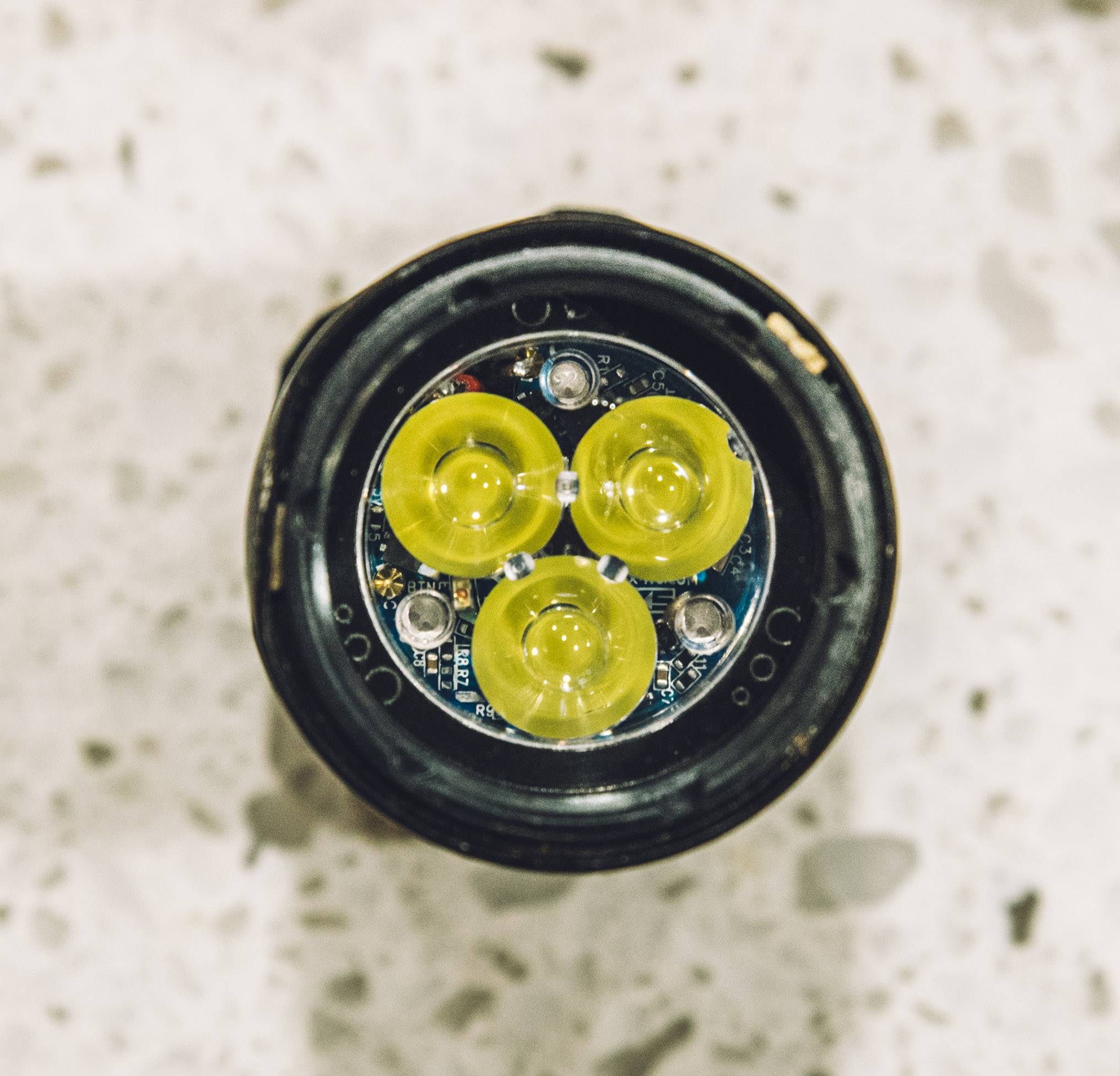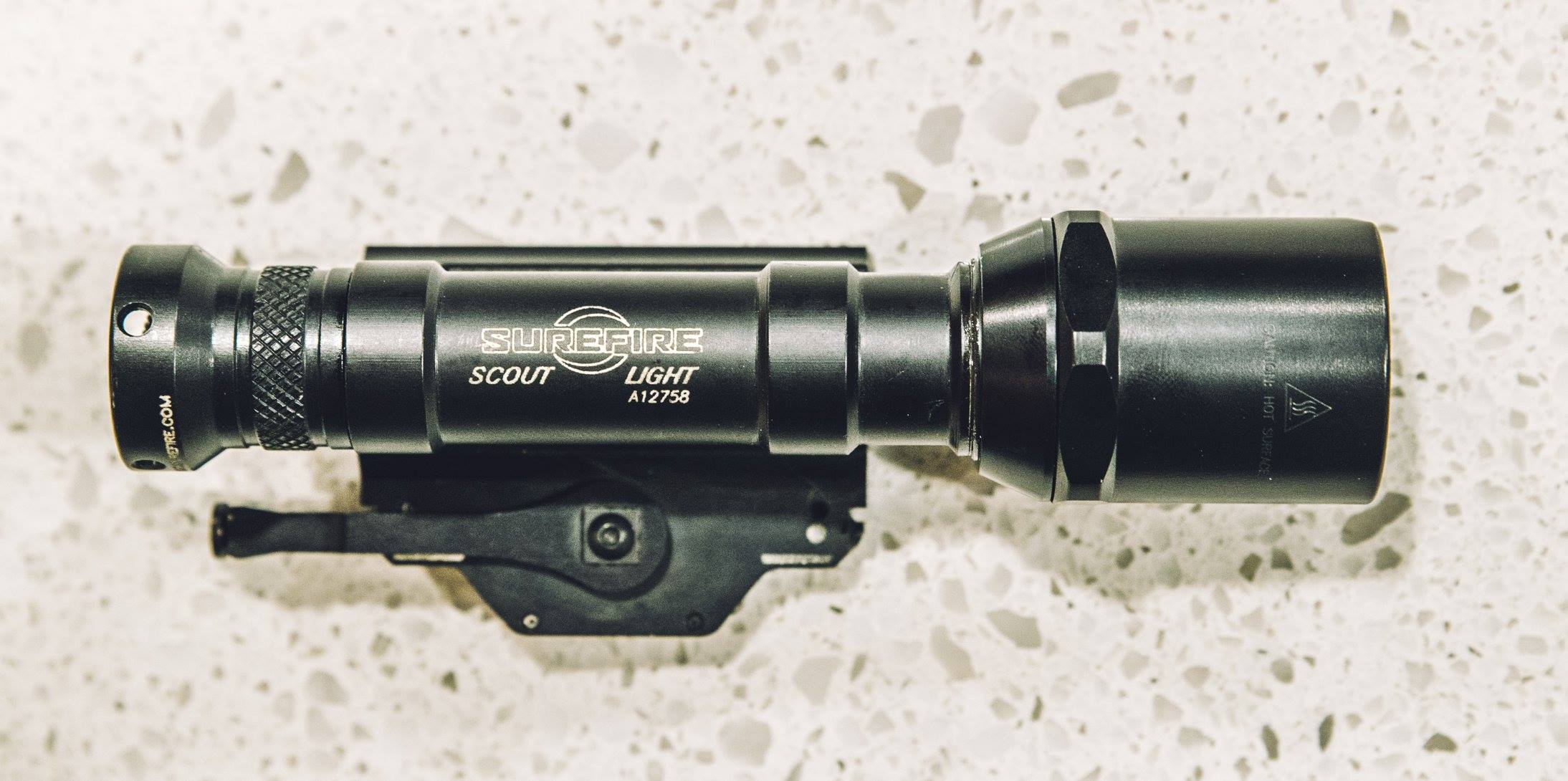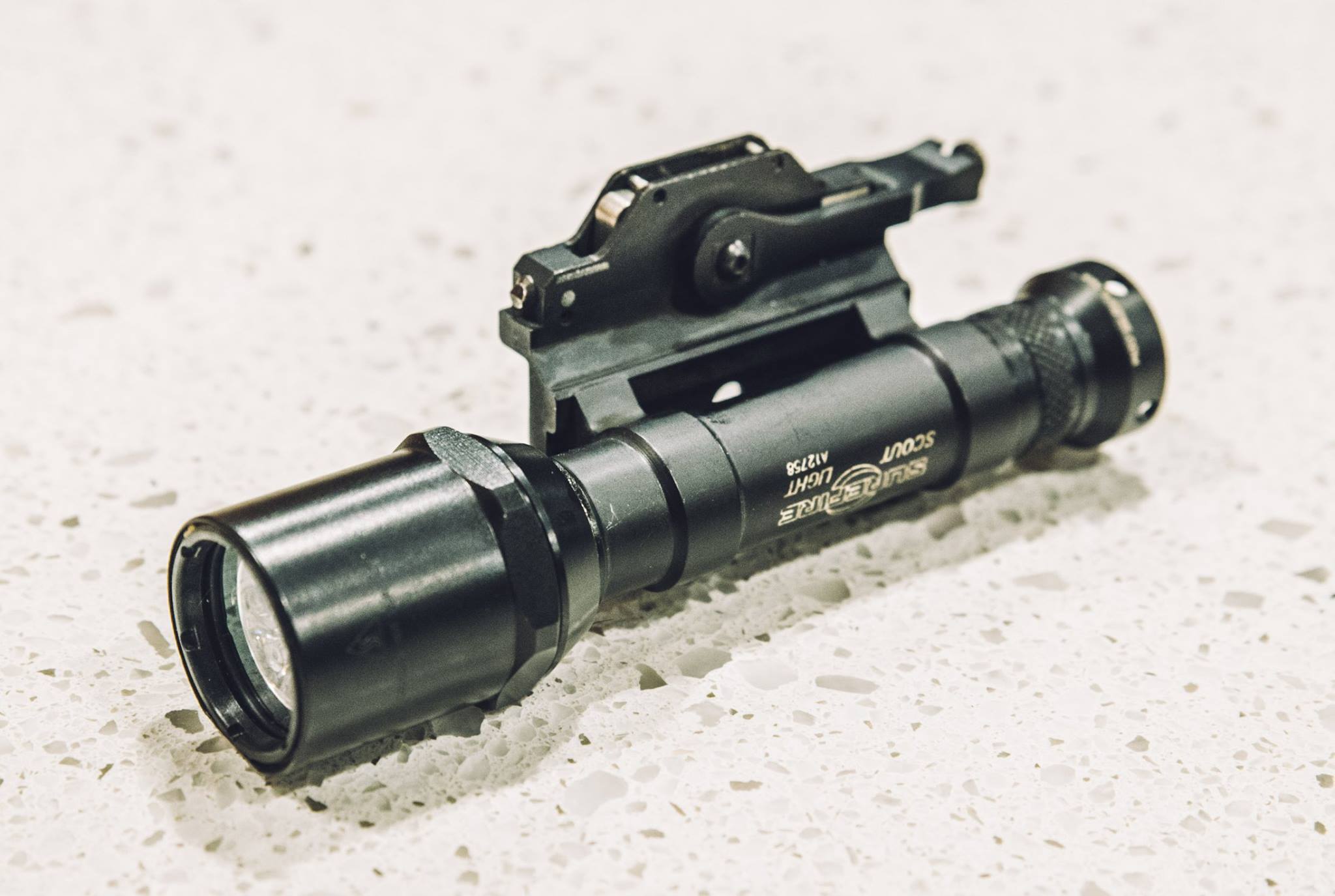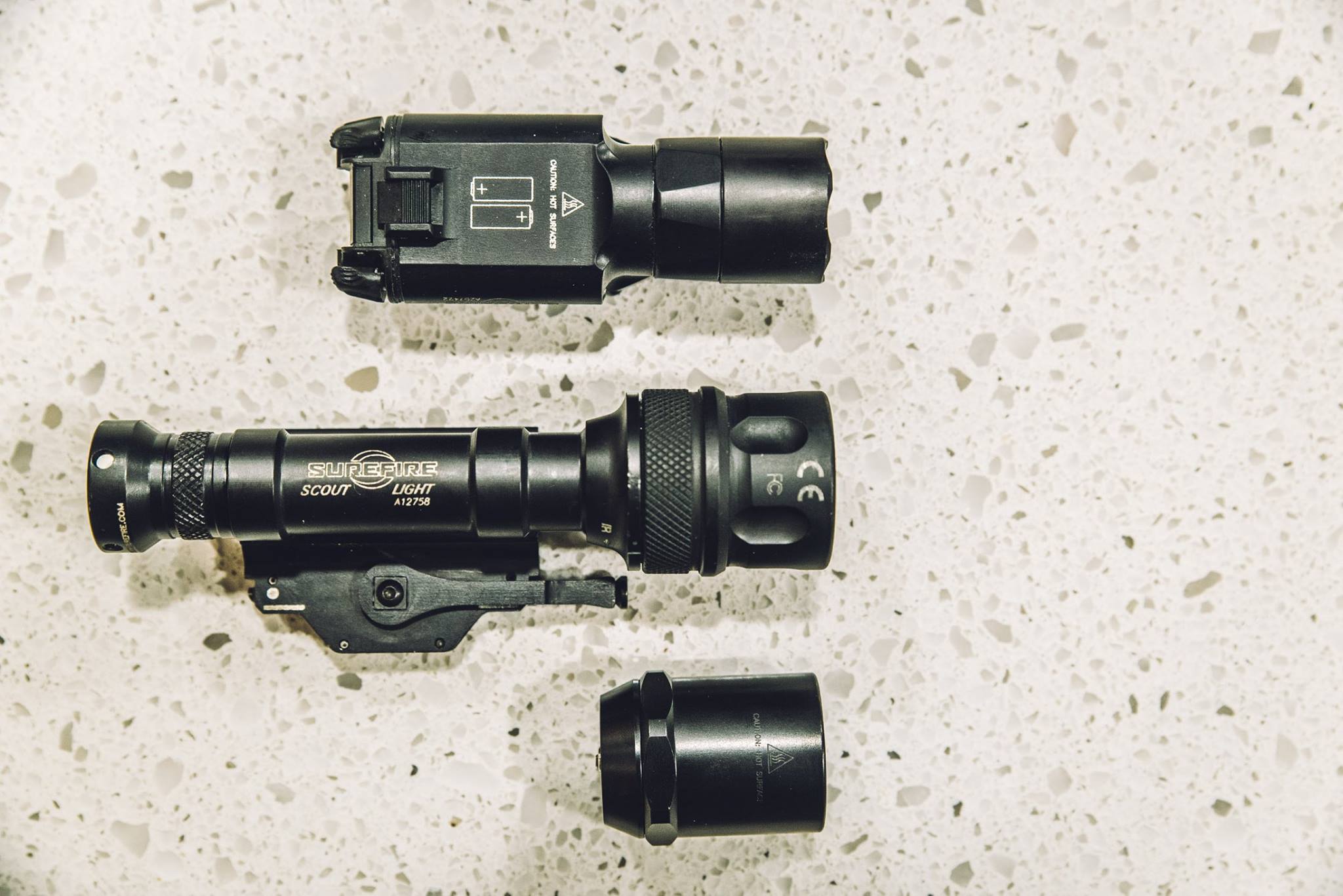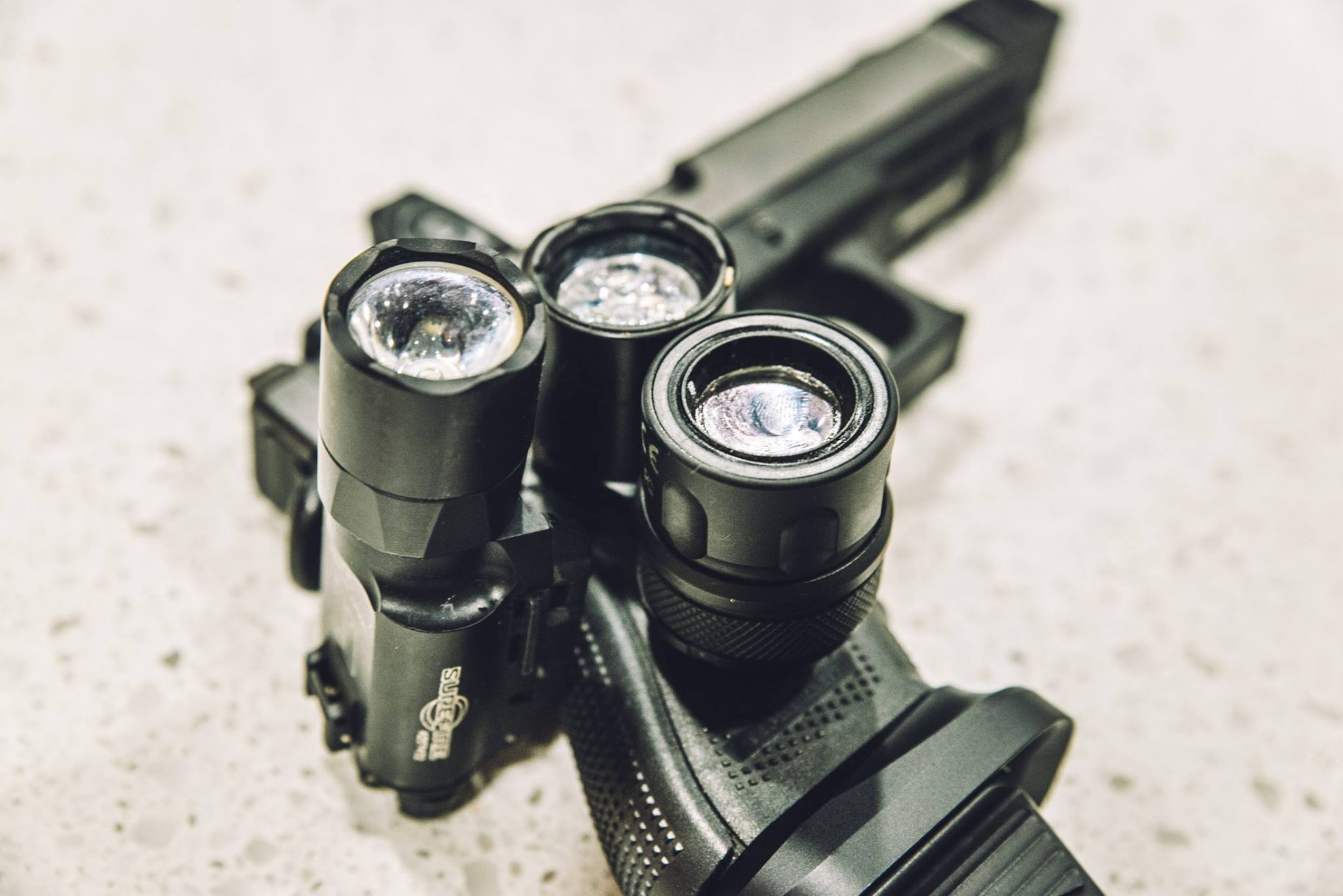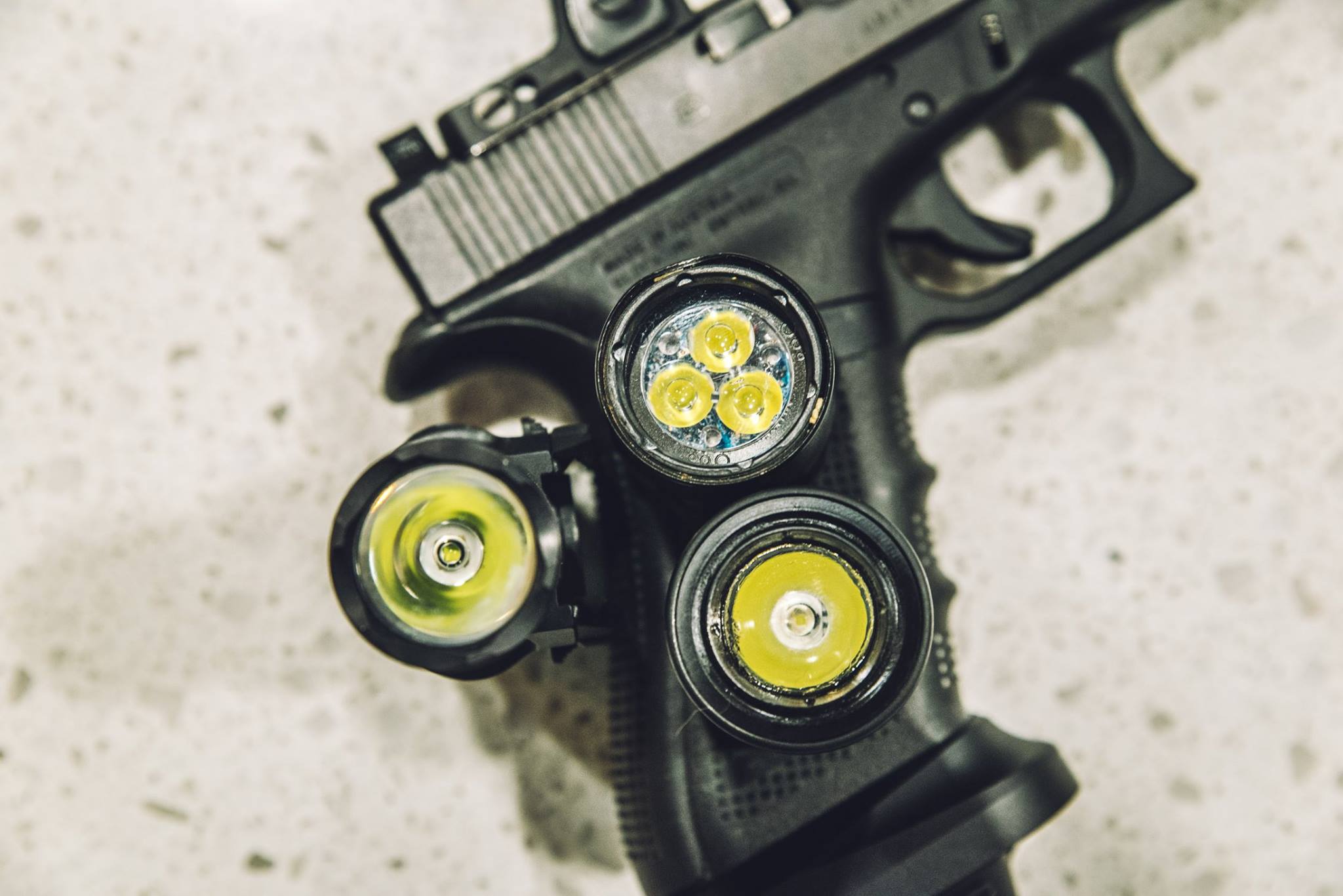I rented a Nikon DSLR with its IR filter removed from in front of its filter, which allows it to capture a much wider frequency band of light. In this case, I put a visible-light-blocking filter on the front of the lens so I was only capturing light above 720nm. This allowed the infrared pointer and illuminator from the MAWL-C1+ to appear brightly and allowed for a direct comparison of the three different range modes. Thought it might be interesting to visualize for people that have just seen the charts B.E. Meyers puts out but not seen them in person through anything other than narrow NVG tubes. Target was about 40yd from the rifle on the tripod and camera lens was 17mm equiv.
I find myself leaving the unit in the mid range setting 80% of the time for the wide splash around the area along with the nice bright spotlight around the target. This is mostly because the shooting I do is at gun ranges or outdoors at friends properties. When indoors the short range setting is fantastic for filling a room and lighting up everything within my NVG's view, without blooming super close targets. I still have yet to hit another shoothouse class and make use of the C1+ but would imagine I'd be flipping between short and mid quite a bit there. The long range setting does a great job when used in conjunction with a clip-on unit like the PVS-30 and its very clean beam pattern really seems to stretch further than restricted units that have noisy, blotchy laser projections. While I didn't understand the long range lockout function on the range selector at first, it works great for me to be able to easily switch between my most used settings very quickly without having to find the middle position. Long range becomes relegated to when I put it on a DM or bolt gun and don't want the mid range flood to splash off grass and other obstructions.


